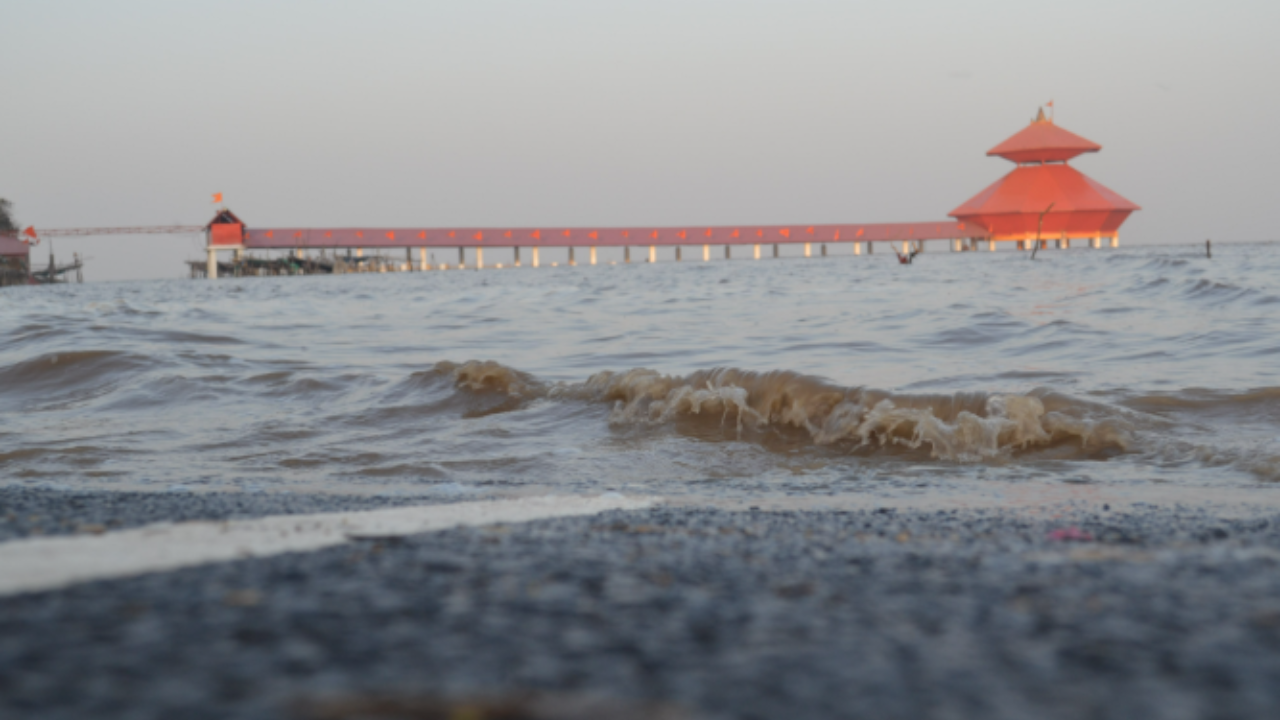India has many ancient and mysterious temples, and one such as nestled in the quaint village of Kavi Kambo in Bharuch district, Gujarat. It’s a Lord Shiva Temple that disappears twice a day. This lesser-known ancient temple actually puts on a disappearing act, and that too at least twice a day, only to reemerge as the tides recede. Also known as the Lost Temple or Gayab Mandir, it’s special in its own way, attracting tons of visitors from far and near. If this has you intrigued, read on to find out more and when is the best time to visit this place.
A legend steeped myth

According to legend, the temple marks the site where Kartikeya, the son of Lord Shiva, defeated the demon Tarakasura. Following the victory, Kartikeya established a Shivling at the spot. The temple is also mentioned in the Skanda Purana, which references a pillar called Vishwanandak Stambh, set up by the Devas at the Mahi Sagar Sangam Teerth Kshetra.Interestingly, legends portray Tarakasura as a devoted follower of Lord Shiva. After intense penance, he sought a boon from Shiva that he could not be killed except by Shiva’s six-day-old son. Shiva granted the wish, leading to Kartikeya’s birth and eventual slaying of the demon. To honor the event, a Shivling was installed at the site, forming the foundation of today’s Stambheshwar Mahadev Temple.Read more: Which country is called the Horn of Africa?
A unique temple

Unlike many grandiose temples, Stambheshwar Mahadev is architecturally simple, yet its charm lies in its interaction with nature. The temple sits just a few meters from the shoreline, which means that during high tide, it is submerged beneath the waves, leaving only the top structure visible. As the tide recedes, the temple reemerges, revealing the 4-foot high Shivling at its sanctum. This daily cycle of disappearance and reappearance is synchronised with the natural rhythm of the sea, making it a spectacular sight for devotees and visitors alike.Read more: 6 countries that have red, white, and black colors in their national flag
Best time to visit
To witness this unique phenomenon, the temple is most captivating during:The Shravan month and on Maha ShivratriPurnima (full moon) or Amavasya (new moon) daysBetween 2:00 PM and 3:00 PM, just before high tide beginsSince the timing of high and low tides varies daily according to the Gujarati calendar, visitors are advised to check with the temple administration or its official website for precise timings.

For pilgrims and all those visiting for curiosity, this temple is more than a visual spectacle. It’s a place of devotion where the sacred Shivling emerges from the ocean’s embrace, symbolising the enduring presence of Lord Shiva amid nature’s ebb and flow. The legend of Tarakasura and Kartikeya adds a rich mythological layer, emphasizing faith, devotion, and cosmic justice.Stambheshwar Mahadev Temple is indeed a mix of myth, devotion, and nature’s wonder, offering both spiritual significance and an unforgettable visual experience. For anyone visiting Gujarat, witnessing a temple vanish into the sea and reappear is a memory that stays long after the tides have ebbed.

